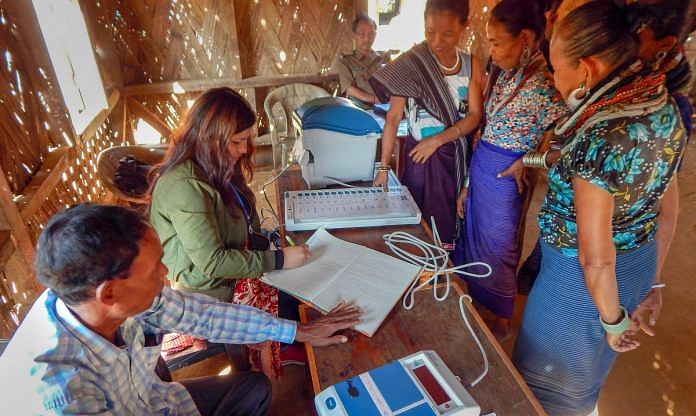As the ‘EVM hackathon’ brings the machine into focus once again, ThePrint looks at its history in India.
New Delhi: The widely-panned ‘EVM hackathon’ in London this week marked the latest chapter in the voting machine’s tryst with doubt and suspicion.
Electronic voting machines (EVMs) were first used in India 37 years ago, in one constituency, Parur, during the 1982 Kerala assembly election. They were meant to replace the paper ballot, where people cast their votes through chits of paper, a mode of voting that came to be seen as time-consuming and prone to manipulation.
The 1982 Kerala election was meant to be an experiment, and the Congress candidate at the time, A.C. Jose, moved the Supreme Court to challenge the use of EVMs after he lost the election to Sivan Pillai of the Communist Party of India.
In his petition, Jose argued that there was no specific law prescribing the use of EVMs — a contention the court upheld. Saying that EVMs could not be used in elections unless a legal provision to this effect was introduced, the court accused the Election Commission of India of overstepping its authority by changing the way polls are held.
Parliament consequently amended the Representation of the People Act 1951 in December 1988 to introduce a provision, Section 61A, that empowered the Election Commission to use EVMs.
Also read: Poll rigging: EC wants police to hunt for ‘EVM designer’, employer says he doesn’t exist
‘Transparent’
Amid persisting doubts about the efficacy of EVMs, the government constituted an Electoral Reforms Committee (ERC) in February 1990 that consisted of representatives from several national and state level political parties. The committee recommended that the EVMs be evaluated by a team of technical experts.
The panel thus formed included, among others, experts from the Defence Research and Development Organisation and IIT-Delhi. In its April 1990 report, the expert committee unanimously recommended the use of EVMs, terming them technically sound, secure and transparent.
In 1992, necessary amendments to the Conduct of Elections Rules 1961 were notified by the government vis-à-vis the use of EVMs.
In 2003, all by-elections and state elections were held using EVMs. The next year marked the complete rollout of EVMs, with the 2004 general election going down in history as the first instance of the machine’s use across the country.
According to the Election Commission, the EVMs used in India were devised and designed by the poll watchdog in collaboration with two state-run entities, Bharat Electronic Limited and Electronics Corporation of India Limited.
The Election Commission has so far used EVMs in conducting over 113 assembly and three Lok Sabha elections, according to official data.
Also read: From the factory to the voting booths: How EVMs work




Very informative!!
😊😊